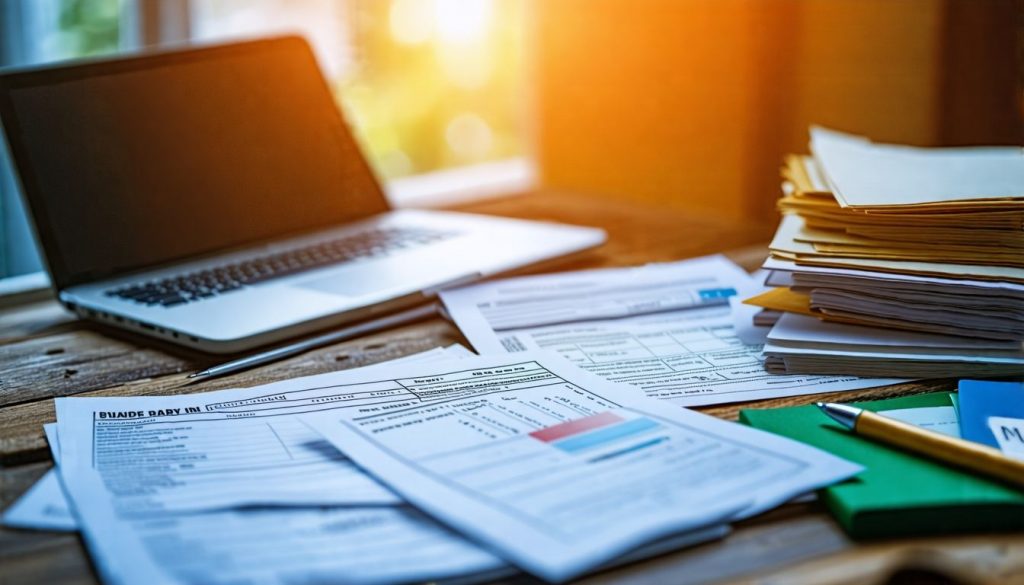Facing car repossession can be a daunting and stressful experience. In Canada, thousands struggle with vehicle seizure due to loan delinquency every year. This article offers insights into the car repossession process, including how to avoid it, what happens during the process, and steps to repair your credit afterward.
Keep reading for essential guidance on navigating this challenging situation.
Key Takeaways
- Car repossession happens when you miss payments, and a lender takes back your vehicle. You can face voluntary or involuntary repossession, depending on if you give the car back willingly or if the lender takes it without your permission.
- Before repossession occurs, look for signs like missed payments and communication from your lender. Taking action early by talking to your lender or adjusting your budget can prevent losing your car.
- During reposession, understand that lenders must follow certain rules, like not using threats or force to take back the vehicle. Know your rights as a borrower to ensure the process is carried out legally.
- After reposession, you might still owe money even if the car is sold. Options like paying off the loan in full, reinstating the loan by catching up on payments, or negotiating with the lender could help get your car back.
- Repairing credit after repossession requires time and effort. Start by checking your credit report and working towards improving it through responsible financial habits like timely bill payment and careful use of new credit lines.
What is Car Repossession?
Car repossession occurs when a lender takes back a vehicle due to missed payments. This process can happen voluntarily or involuntarily, depending on the situation and agreements made between you and the lender.
Definition and process
Vehicle repossession occurs when a lender takes back a car due to the borrower’s failure to make payments on their auto finance agreement. This process can happen through involuntary repossession, where the lender sends a repo man to reclaim the vehicle, or voluntary surrender, where the borrower returns the car willingly after realizing they can no longer meet their financial obligations.
In Canada, creditors must follow specific repossession laws that typically require them to notify borrowers of default and provide an opportunity to settle outstanding debts before taking action.
Throughout this process, it is essential for borrowers to understand their rights as well as any potential impact on credit scores resulting from car loan default or missed car payments.
Being informed about your options can help you navigate financial hardships more effectively.
Difference between voluntary and involuntary repossession
Voluntary repossession occurs when a borrower willingly returns their vehicle to the lender. This usually happens when the borrower realizes they can no longer make payments and chooses this route to lessen any potential damages to their credit score.
The process is generally more amicable, and it allows borrowers some control over how and when they relinquish the asset.
Involuntary repossession, on the other hand, takes place without the borrower’s consent. Lenders typically initiate this action after multiple missed payments. A third party may be hired for asset recovery in such cases.
Borrowers might find themselves surprised by sudden bailiff proceedings, leaving them with little time to react. Understanding these differences helps borrowers navigate their options during challenging financial times effectively.
Before Repossession
Before repossession, many signs can indicate trouble with your car loan. Recognizing these signs early allows you to take action and protect your vehicle.
Signs that you may be facing repossession
The prospect of car repossession can be alarming. Understanding the signs can help you take action before it becomes a reality.
- Missed Payments: If you’ve skipped payments or are consistently late, your lender may initiate the repossession process. This is often one of the first signs that you’re facing vehicle repossession.
- Communication from Lender: Frequent calls or letters from your bank about missed payments signal potential trouble. Lenders typically reach out to remind you of the overdue amounts, and ignoring them may worsen your situation.
- Default Notices: A default notice from your lender indicates that they’re serious about reclaiming their asset. This formal communication usually details the amount owed and outlines your options moving forward.
- Account Status Changes: If your account status changes to “delinquent” or “default,” it raises a red flag. These statuses mean that you have not met the financial obligations tied to your car loan.
- Increased Debt Collection Activity: If debt collection agencies contact you regarding missed payments, it’s a strong indicator of impending repossession. They typically work for lenders to recover owed money before more drastic actions are taken.
- Vehicle Tracking Devices: Some lenders install GPS tracking devices on cars as part of financing agreements. If you notice weird notifications or tampering with your vehicle, it might indicate preparation for involuntary repossession.
- Lack of Communication from You: Ignoring calls or failing to communicate with your lender can prompt them to move forward with repossession. They expect borrowers to reach out if they experience financial difficulties.
Becoming aware of these signs gives you an opportunity to address any issues with repayment agreements proactively. Those steps might help preserve both your vehicle and credit score while keeping debt collection at bay.
Steps to take to avoid repossession
Taking proactive steps can help you avoid car repossession. Understanding your financial situation is key to preventing this serious issue.
- Communicate with Your Lender: Reach out to your lender as soon as you face difficulties with payments. Open dialogue often leads to options like deferred payments or modified agreements, which could ease your financial burden.
- Create a Budget: Analyze your monthly expenses and income. A clear budget helps identify areas where you can cut costs, allowing you to allocate more funds toward settling your car loan.
- Prioritize Payments: Focus on making your car loan payment a top priority. Missing other bills may be tempting, but keeping up with your car payment helps prevent the risk of repossession.
- Consider Refinancing: Look into refinancing options if you’re struggling with high interest rates or monthly payments. This could lower your payment amounts and make it easier for you to stay current on your loan.
- Explore Assistance Programs: Investigate government or local assistance programs designed to help individuals in financial distress. These resources may offer temporary relief during tough times.
- Sell or Trade In Your Vehicle: If keeping the vehicle is no longer feasible, consider selling or trading it in for a less expensive model. This action can help pay off the existing loan and reduce financial strain.
- Understand Your Rights: Familiarize yourself with Canadian laws surrounding repossession and debt collection practices. Knowing what legal protections are available empowers you during challenging financial situations.
- Avoid Ignoring Notices: Don’t ignore letters or calls from your lender regarding missed payments or potential repossession actions. Addressing these issues promptly can prevent them from escalating further.
- Ask for Help from Family or Friends: Reach out to trusted family members or friends who might be able to assist financially for a short time. A small loan could keep you on track while you figure out a long-term solution.
- Seek Financial Counseling: Consult with a certified credit counselor who understands the nuances of car financing in Canada. They can provide personalized strategies tailored to build better budgeting habits and improve overall finance management.
Taking these steps keeps you informed and proactive in avoiding repossession while maintaining control over your finances.
Understanding your finances
Understanding your finances is crucial for preventing car repossession. Assessing your current financial situation helps you understand what you can afford. Analyze your income, expenses, and any existing debts.
A clear picture will guide you in managing payments effectively. If you’re struggling to keep up with bills or facing a drop in income, it may be time to reassess your budget.
Actively communicating with lenders can also provide options that might ease financial strain. Settling a car loan early or negotiating payment terms could lead to more manageable monthly obligations.
Taking proactive steps now significantly decreases the risk of involuntary repossession later on. The next section delves into how the repossession process unfolds when circumstances escalate beyond control.
During Repossession
During repossession, the lender sends a team to take back your car. You may feel anxious and confused during this time, but knowing your rights can help you handle the situation better.
How the repossession process works
The repossession process starts when a borrower defaults on their car loan. Lenders typically begin by sending notifications or statements regarding missed payments. If no action is taken, the lender may hire a repossession agent to retrieve the vehicle.
This can happen without prior warning, though they usually must follow provincial laws governing repossessions in Canada.
Repossession agents are allowed to take the car as long as they do not breach peace during the process. They cannot forcibly enter your property or use physical threats. Once the vehicle is taken, it will usually be sold at an auction or through other means to recover the outstanding balance of the loan.
Understanding your rights as a borrower is crucial throughout this process, as well as knowing that redemption of loan options may still be available even after repossession occurs.
Your rights as a borrower
As a borrower in Canada, you have specific rights during the car repossession process. Creditors must provide appropriate notice before repossessing your vehicle. This means they should inform you of any missed payments and give you a chance to catch up on your loan.
If they do not follow proper procedures, it could be considered unlawful repossession.
Understanding what happens during a bailiff repossession is crucial. The repossession agent cannot use force or threaten you when taking possession of your car. You can also request that the lender provides proof of ownership and debt before allowing them to take your vehicle back.
Exploring options for settling your car loan may help prevent further consequences down the line, such as damage to your credit score after repossession.
What to expect during a repossession
During a repossession, the lender or their agent will arrive to take back the vehicle. This may happen at your home or workplace. They often work quickly and quietly, following legal protocols to avoid confrontation.
Expect them to secure the car without causing damage or disturbance.
Your rights as a borrower remain important during this process. Canadian law requires that repossession occurs peacefully; you cannot be threatened or harmed in any way. If you are present when they attempt to reclaim your car, it’s best not to interfere with their actions.
Understanding the car repossession process: before, during, and after is crucial for knowing how to respond appropriately in such situations.
After Repossession
After repossession, you may face several consequences that can impact your finances and credit score. You will need to explore options for recovering your vehicle or managing the aftermath effectively.
Understanding these challenges is essential for moving forward in a positive direction. For more insights on this critical phase, continue reading further.
Consequences of repossession
Car repossession can have significant consequences for borrowers in Canada. A repossession negatively impacts your credit score, often resulting in a drop of 200 points or more. This reduction makes it challenging to secure future loans or credit cards at favorable interest rates.
Financial obligations do not end with the vehicle’s loss. Borrowers may still owe money if the car sells for less than the remaining loan balance, leading to potential collections efforts from lenders.
Settling car loan debt post-repossession can be complicated and may require negotiation with creditors to find an affordable resolution.
Options for getting your car back
Regaining possession of your vehicle after repossession can be challenging but possible. Several options may help you retrieve your car.
- Pay Off the Loan: If you have the funds, paying off the entire outstanding balance can allow you to reclaim your vehicle quickly. This often eliminates additional fees associated with repossession.
- Reinstate the Loan: Many lenders offer a reinstatement option where you can catch up on missed payments and any fees. You typically need to pay the overdue amount within a certain timeframe specified by your lender.
- Negotiate with the Lender: Open communication with your lender might lead to alternatives like extended repayment terms or reduced late fees. A cooperative approach could result in a more manageable payment plan.
- File for Bankruptcy: Filing for bankruptcy can sometimes pause repossession actions temporarily. It offers a chance to reorganize debts and could help keep your car, depending on the type of bankruptcy filed.
- Seek Legal Help: Consulting with an attorney experienced in consumer rights may provide insight into potential violations during the repossession process. Legal guidance can reveal if you have grounds for dispute against unfair practices by the lender.
- Purchase Back Your Car at Auction: After repossession, vehicles often go to auction for resale. Purchasing it back directly from the auction may be an option if it’s financially feasible, allowing you to regain ownership at possibly lower costs.
- Consider a Personal Loan: Taking out a personal loan could provide necessary funds to pay off what is owed on your vehicle or cover other expenses while negotiating with your lender.
- Explore Social Assistance Programs: Some community organizations offer assistance programs designed to help individuals facing financial struggles regain access to their vehicles through grants or temporary loans.
Taking action promptly increases the chances of recovering your vehicle and minimizing financial impact following repossession.
Repairing your credit after repossession
Car repossession negatively impacts your credit score. This effect can last for up to seven years, making it essential to take action. Start by obtaining a copy of your credit report to understand how the repossession is reflected in your overall credit history.
Regularly monitoring your credit can help you identify areas that require improvement and track changes over time.
Establishing a budget helps manage finances efficiently after repossession. Paying bills on time plays a crucial role in rebuilding trust with creditors. Secured or unsecured credit cards may also assist in restoring your score when used responsibly.
By demonstrating consistent, responsible use of credit, you can gradually recover from the setbacks caused by repossession and work toward financial stability moving forward.
Conclusion
Understanding the car repossession process is essential for anyone facing financial challenges. Knowledge empowers you to take proactive steps before, during, and after repossession.
Familiarize yourself with your rights and options to minimize impact. Staying informed can make a significant difference in regaining control of your finances and credit health. Approach this situation with the right mindset, and you can navigate through it effectively.
FAQs
Apologies for the confusion, but it seems like you forgot to include the keywords for Article 2. Please provide them so I can generate accurate FAQs about “Understanding the Car Repossession Process: Before, During, and After”.








